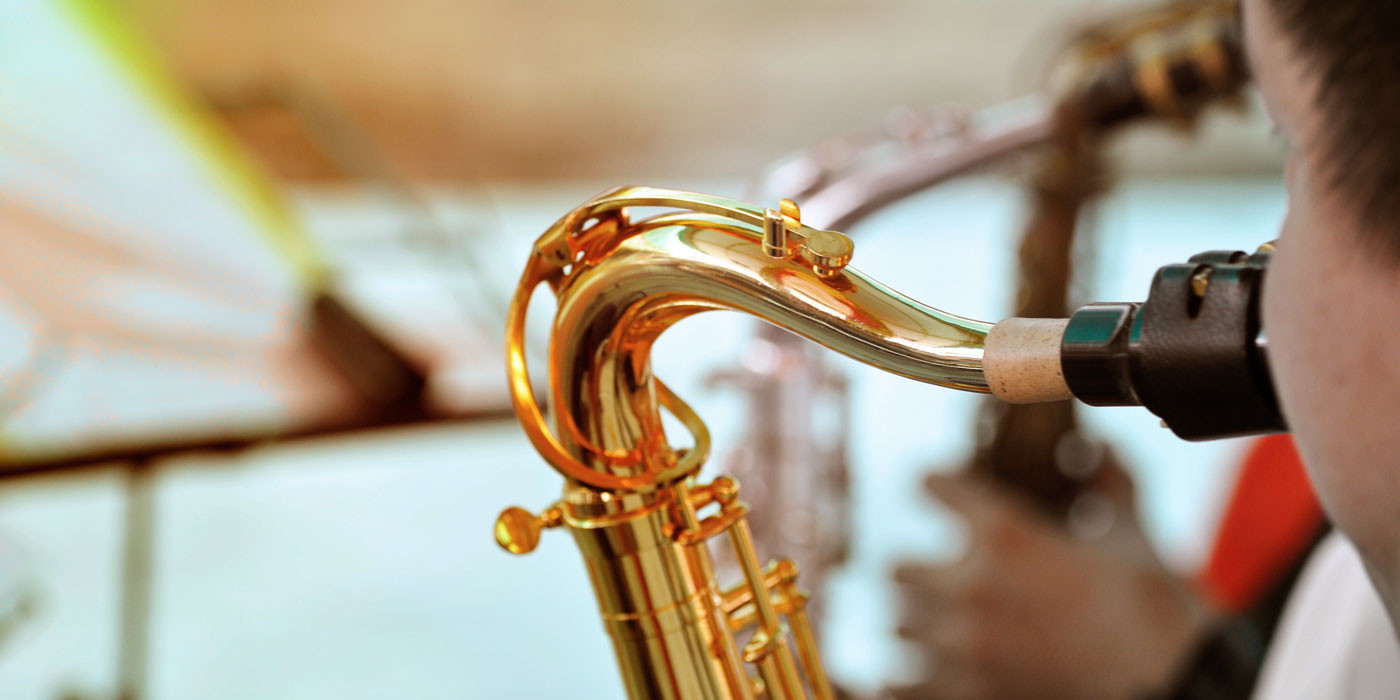
Has your music program been feeling a bit stagnant lately? Do your students need an infusion of energy and motivation? Then breathe new life into your ensembles with the practice of mindfulness. It will do wonders for you and your students. Your students will come to love the centering and calming effects of the various relaxing breaths, and you will find that every aspect of your rehearsal elevates—focus, engagement, classroom management, motivation, and a sense of togetherness. “When we breathe together, we come in together” is a common saying among directors when we want to align musical entrances. I have also found that groups that breathe together listen more deeply, connect, and create community together.
When your ensemble mindfully breathes together, it aligns all the musicians psychologically and physiologically. Breathing together in sync helps to create the sense of community, connectedness, and unity that is essential for a successful music ensemble. Just as mindful breathing serves our well-being, mindful breathing builds trust in ensembles and will help students decompress and feel better. Don’t be surprised when they start asking you to include more mindful breathing in your rehearsals and music classes!
Gratitude Breath
By including a gratitude breath at the beginning and/or end of each rehearsal, we can cultivate a habit of gratitude. Ask your students to think of someone or something that they appreciate. It might be a pet, a friend, a family member, their instrument, music, or a memory. Breathe in your nose for four counts while focusing on what you are grateful for and exhale any stress, anxiety, or toxic negativity out your mouth for eight counts. Just release and let it go. It works well to repeat this three times. You may find that it will boost the mood of the players to ask for volunteers to share out what brings them gratitude.
Focus Breath
Instead of asking students to stop talking during rehearsal, lead them through the focus breath, breathing in the nose for 4 counts and out the nose for 4 counts for three or four times in a row. This breath will center, calm, and focus your students, and the bonus is that it is impossible to talk when you are breathing through your nose! This is a great way to refocus students in a positive way, to direct them to where you want them to be, fully present and ready to make music, as opposed to focusing elsewhere. When we ask students to “stop talking,” it can create a confrontational rather than collaborative climate. Of course, there are times when it just needs to be said, but I believe that, in the end, you and your students will instead prefer engaging with the focus breath for a few moments. I use the focus breath at the beginning of rehearsal as needed to heighten awareness in the rehearsal and after transitions prior to working on another piece or retuning the group.
Beginning a rehearsal with mindful breathing and a focus on gratitude primes the mind for its optimal state for learning, collaborating, creating, and music making. Incorporating mindful practices elevates self-awareness and allows us to fully tap into our feelings and emotions to then fully express meaning through our instruments. Directing our bodies to breathe deeply and our minds to focus on gratitude also calms nerves and anxiety, setting us up to be fully in the moment musically. When we are stressed and our heart rate is elevated, our breathing gets tight, shallow, and pinched off. But when we are calm, our breathing is relaxed and flows, which is optimal for producing a beautiful tone and phrasing.
Confronting Performance Anxiety
Through daily mindful conditioning, we are also teaching our students life-long skills for managing, coping with, and avoiding performance anxiety. They will be able to transform nervousness to a calm, focused intensity. Taking a mindful, focused breath as an ensemble before playing a challenging piece at a concert is a great way to prepare students for a high-level performance. We spend so much time on the technique of “getting the music right,” yet we should also spend time on developing habits that will heighten our performance from the inside out.
You can empower your students to lead the ensemble through mindful breathing practices to increase ownership and buy-in. Older students can also mentor younger students on these breathing habits and techniques. Developing breathing habits specific to developing great tone and air support serves an equally important purpose as mindful breathing techniques that help center the mind, heighten awareness, and relax the nerves.
This article originated from an edited excerpt in Upbeat! Mindset, Mindfulness, and Leadership in Music Education and Beyond by Dr. Matthew Arau, published by GIA Publications.